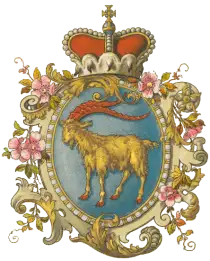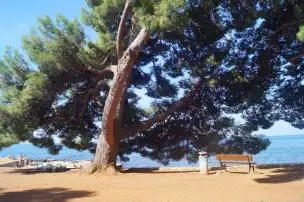A peninsula in the northern part of the Adriatic Sea. The vast majority belongs to Croatia, with a small portion in Slovenia. It is one of the most remarkable parts of Croatia — a peninsula with a completely different character from the rest of the Dalmatian coast.
This is one of those places where you can see a blend of cultures everywhere — Roman, Venetian, Austro-Hungarian, and Italian. The region was Roman, then for centuries under Venetian influence, and after World War II became part of Croatia. Even today, in many towns, both Croatian and Italian are spoken.
Discover the best flights to Croatia See current prices and promotions.
Check flights to Croatia
The March of Istria
The history of Istria’s autonomy dates back to the Middle Ages. From early medieval times, there was the March of Istria (Latin: Marca Histriae), a kind of border province established within the Carolingian Empire. Marches were a typical organizational form for borderlands — they were governed by margraves, who had significant military and administrative powers.
In later centuries, the March of Istria came under the control of various powers — first the Franks, then local rulers, followed by the Venetian Republic, and from the late 18th century (after Venice’s fall) it was incorporated into the Habsburg monarchy.
Under the Habsburgs, especially in the 19th century, Istria functioned as a crown land within the so-called Austrian Littoral (Österreichisches Küstenland), together with Trieste and Gorizia. Although formally part of a larger administrative unit, it had its own regional assembly in Poreč (Pazin in Croatian), local government, and certain elements of administrative autonomy. This was typical for the Habsburgs: some provinces had their own assemblies, local authorities, and even schooling in native languages (although in practice, German and Italian predominated).
Interestingly, this period saw the rise of strong national movements — Croatian and Slovenian on one side, Italian on the other. In Istria, there were intense disputes over the language of administration, education, and the right to representation. The region was ethnically very diverse: coastal towns (like Rovinj, Pula, Poreč) were mostly Italian, while the interior of the peninsula was inhabited mainly by Croats and Slovenes.
Pinus nigra dalmatica
The Black Pine — Pinus nigra — is a species of pine naturally found in Southern Europe and around the Mediterranean. It is quite distinct from the common Scots pine (Pinus sylvestris) known in Poland.
The Black Pine typically grows to a height of 20–55 meters. It has a very dense, dark green crown and thick, stiff needles — considerably tougher and longer than those of the Scots pine. The bark of mature trees is very dark, almost black or dark gray, thick, and deeply fissured — hence the tree’s name.
The Dalmatian Black Pine comes from southern Dalmatia, Montenegro, and parts of the Albanian coast. Its needles are slightly shorter, more matte, and less stiff.




